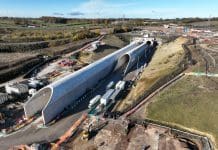Alan Piper of the Alan Piper Consultancy discusses the importance of sustaining local confidence when regenerating town centres
Seeking the right mix
Local authorities have tended to shape their regeneration plans around large scale developments, persuaded by the size of the investment promised and hoping to transform their town centre in one hit.
However, even if you can attract a major player to build in your town, their focus tends to be on the most profitable use of the day, to the exclusion of the other uses that keep a town viable and attractive.
To sustain local confidence that a town centre is being regenerated, even small or temporary projects can have a big impact if they bring back variety and activity to prominent sites.
Filling gaps in the High Street
Traditional high streets have long been under pressure from supermarkets and out-of town retail parks. Charity shops have helped keep up the appearance of old shopping parades, but the recession has opened up gaps faster than they can be filled, with the extinction of several familiar retail chains that anchored our high streets.
Yet for many organisations, a ground-level shop in a town centre location is far better for serving the public than the commercial office block or rundown mansion where many council departments, charities and professional services are actually based. Shop premises offer more scope for full disabled access, and central sites can be close to public transport.
In contrast to the cafes and takeaways that most shopping parades now depend on for survival, there would be less demand for late-night use, so less cause to annoy residents of the flats above. Be realistic too, and accept that some shopping frontages are now too peripheral to survive and can be allowed to become residential.
Attracting visitors
A proven way to boost town centre trade is to attract more visitors. Only a few centres can do this by offering more and bigger shops –most centres can no longer compete on their retail offer alone.
Other possible approaches are to promote entertainment, arts or heritage destinations within your town centre. Yet to sustain the flow of visitors, provision must be made for the whole visitor experience, from website information to the parking and toilets. Remember too that a busy evening economy brings its own challenges.
Make space for enterprise
It’s high time that the local economy received more attention in regeneration efforts. Older industrial premises have been the main casualties of the drive for town centre housing, reducing the scope for new businesses to set up, or for growing firms to stay.
What survives may be obsolete, or provided as a planning obligation with little thought for the needs of its users. We need to see more councils encouraging craft, creative and media enterprises, and safeguarding the premises for them to operate in.
Enlist grassroots support
The local community can be a major resource for renewal. Grass-roots community groups are often bubbling with ideas and have access to funding streams which councils cannot reach, as well as adding “sweat equity” and positive publicity which may attract more investors. Efforts need to be made to involve smaller local businesses – there may even be scope for a Business Improvement District.
Many communities are exploring Neighbourhood Planning as a more inclusive approach to regeneration. Contact Alan Piper for advice on single properties or neighbourhood-level appraisals.
Alan Piper
Tel: 020 7207 0347
www.alanpiper.co.uk







![[VIDEO] Cambridge waste water plant granted permission to relocate Artist impression of the new Cambridge waste water plant and surrounding land](https://www.pbctoday.co.uk/news/wp-content/uploads/2025/04/p.151-768x364-1-218x150.jpg)





